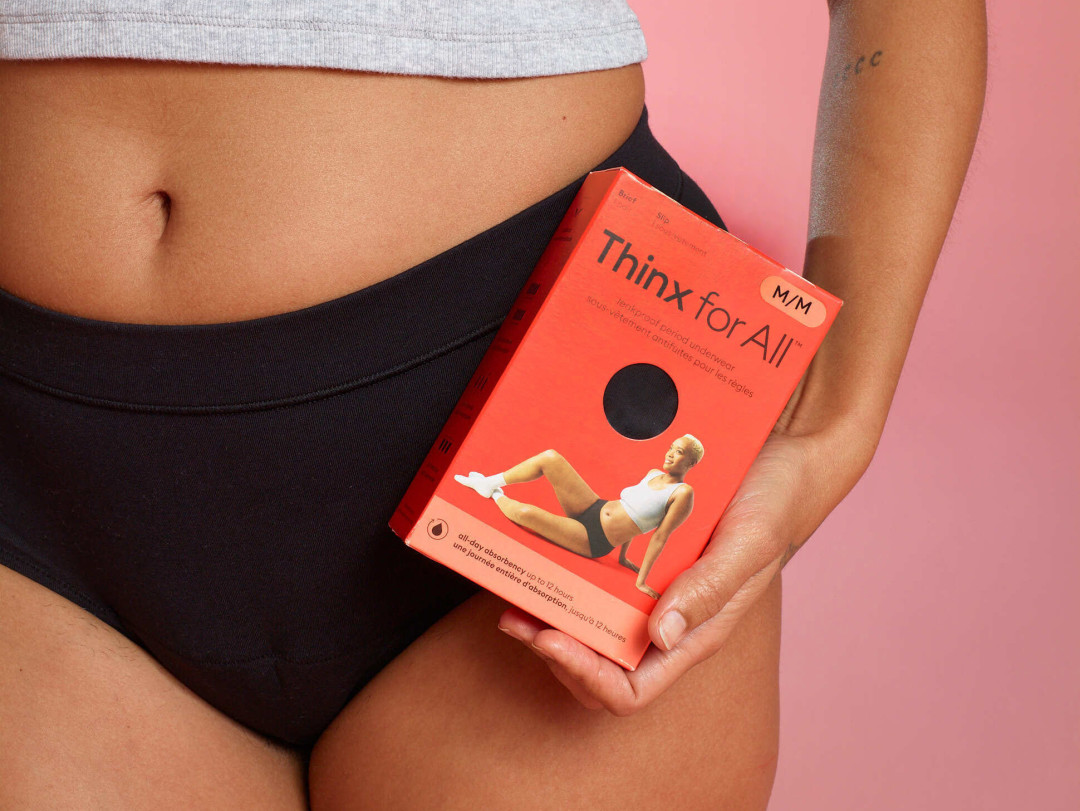Sign up to stay in the loop on new styles and sales!
Sign up to stay in the loop on new styles and sales!
#explainer
A History of Menstrual Hygiene
odds & ends
·5 min read

by Toni Brannagan | 05/01/2019
Quick, mark your calendars — May 28th is Menstrual Hygiene Day! Yay!
To clarify, UNICEF and WHO define menstrual hygiene as “Women and adolescent girls using a clean menstrual management material to absorb or collect blood that can be changed in privacy as often as necessary for the duration of the menstruation period, using soap and water for washing the body as required, and having access to facilities to dispose of used menstrual management materials” – we think this definition could be made more inclusive by including *all* people with periods, not just women, but you get the point.
Fighting for these rights isn’t just limited to the 28th though. Menstrual Hygiene Day is a global platform that brings people together to promote menstrual hygiene management. People around the world are denied access to the resources they need to manage their periods, and it impacts not only their health, but their self esteem, education, and economic empowerment.
So, we’ve got a loooong way to go, but I’m not gonna pretend that sensibilities around periods haven’t evolved *at all*.
First Blood
You might already know that there’s a limited amount of recorded info on how early civilizations handled menstruation. For the scribes, who were mostly men, writing about it, period management wasn’t exactly a huge topic of interest. To be fair to our ancient ancestors, women tended to menstruate much less than they do today. They started their flows later in their teens, spent more time pregnant (or breastfeeding) and thus not bleeding, hit menopause earlier, and, unfortunately, died earlier.
However, some civilizations found, um, ~alternative~ uses for menstrual blood: The Egyptians were waaaaaay ahead of the whole witchy vibes trend, and incorporated the blood into spellcasting and sorcery… including drinking it. (I know we’re all about smashing the taboo, but I can say that’s, like, *a lot*… right?) Similarly, the Greeks mixed wine and period blood, then watered their crops with these cocktails because they believed the concoction aided fertility. Is anyone else surprised by the level of comfort these guys must have had with collecting menstrual blood? They were truly trailblazers for many a Brooklyn hipster.
For some Orthodox Jewish communities, on the other hand, niddah is a label used for menstruating women going back to ancient times that recognizes the loss of a potential life and signifies a holy period of marital separation. Basically, a person deemed niddah is physically separated from their husband and has to be blessed in a pool of water, often known as mikveh, before resuming regular marital activities — a period of abstinence that has been revered as a trailblazing approach to sustaining a healthy marriage.
As you might guess, the Medieval era yielded limited options for period management, although many opted to wear red petticoats. This way, when their time of the month rolled around, stains wouldn’t be as visible. I’ll say what you’re probably thinking: hiding menstrual blood isn’t the same as menstrual hygiene. No, no it isn’t.
Period Progression
Nearly all ~modern~ products used to manage menstrual blood were created—or at least, branded—in the 20th century. Of course, before then, people used pretty much whatever they could come up with to absorb their blood. But surely this new market of period products started new, empowering conversations about feminine hygiene, right? Yeah, that’s not exactly how it worked out.
Many of these modern-day products don’t necessarily have proper menstrual hygiene in mind, just the idea of concealing blood – similar to the Medieval innovation of red fabric. This distinction is important because selling period products that don’t have menstrual hygiene in mind has proven disastrous.
Take Rely tampons, released by Proctor & Gamble in 1975. Made from synthetic materials I don’t know how to pronounce, they were advertised as tampons you could wear for an entire period (!??!?!!!). Long story short: After being tipped off by 812 reported cases of toxic shock syndrome, Rely tampons were pulled off the market within 5 years. Today, there is still no law that requires the materials in your tampons to be listed on their boxes, which is why your mom spent your formative years pestering you to keep track of how long you went between changing them.
Modern Menses
It’s almost embarrassing how much modern-day views of menstruation reflect the past, as far back as ancient eras. One Chicago charter school, rather than permitting their students to take regular bathroom breaks, “allows” them to tie sweatshirts around their waists to hide visible blood stains — as if that solves the problem of children sitting in uncomfortable, over-filled period products all day, or the culture of shame that stigmatizes those who menstruate. Worldwide, whether they’re in Chicago or sub-Saharan Africa, as many as one in ten girls misses school because they lack the resources to manage their periods. And in rural Nepal, women are frequently banished from their homes every month to “menstrual huts” where conditions are sometimes fatal.
There are countless studies detailing the psychological effects of maintaining cleanliness, and while access to basic resources like water and cleaning products are not universal, there are no other natural processes as viciously attacked as regular period management.
If you’ve gleaned any wisdom from our messy history with menstruation, it should be the knowledge that these biases ain’t new. And like all prejudices, the only way to unlearn them is to actively make an effort to do so.
Have you gotten over (or are still working on) any feelings of ickiness around menstrual hygiene management? I’ll go first – I gave up on menstrual cups because thinking about emptying one in a public bathroom stresses me out! I should really work on that!
#SmashTheTaboo and share your stories with us in the comments.
Toni Brannagan is a writer and was the former Copy and Content Manager at Thinx.
by Toni Brannagan


